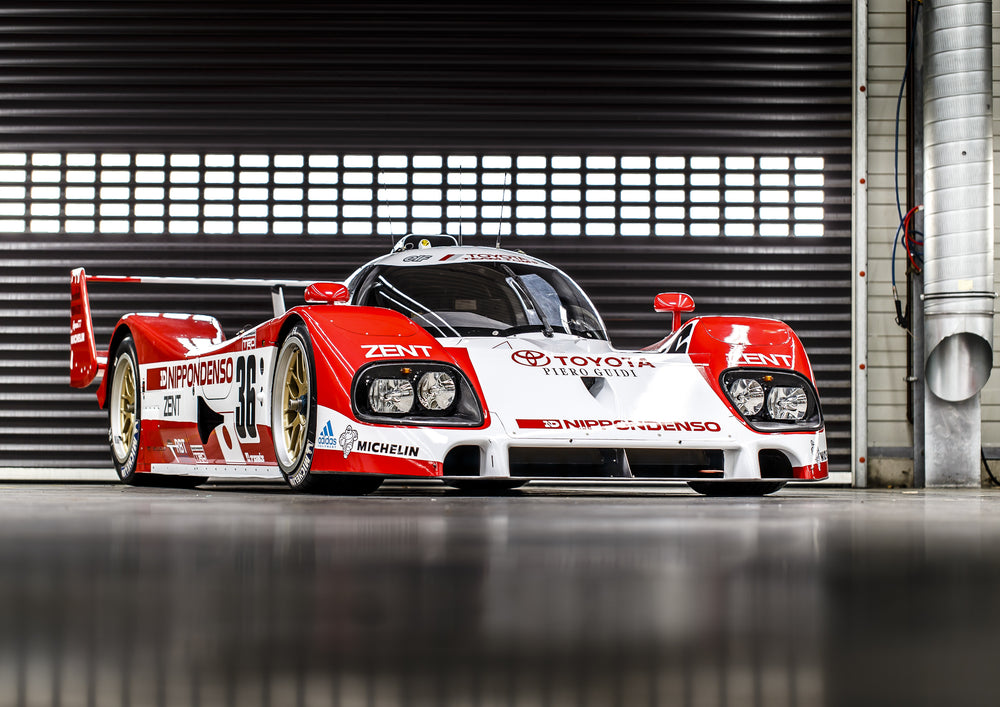Okay, the virtual tour is a bit rudimentary, but still, it’s better than nothing.






Starting in the foyer, fans are met with a Corolla WRC – a model that won five WRC events and the 1999 World Rally Championship Constructors’ title – and the TS050 Hybrid that secured Toyota’s first win at the24 Hours of Le Mans at the 16th attempt. Perhaps more intriguing though is the TS020 GT-One, one of only two homologated examples ever built – the other is in the marque’s Japanese museum – and a road-going example of the TS020 prototype that competed at both the 1998 and 1999 editions of the races to unfortunately limited success: despite one of its three entries qualifying on the front row in ’98, gearbox failure for Thierry Boutsen, Ralf Kelleners and Geoff Lee in the closing stages meant 9th overall for Japanese trio Ukyo Katayama, Toshio Suzuki and Keiichi Tsuchiya was the best Toyota could celebrate; one year later, the TS020 was denied once again when Martin Brundle, Emmanuel Collard and Vincenzo Sospiri suffered a puncture.









Given that Toyota’s Le Mans career started in 1985 though, the TS020 is far from the only sports car on display in the TMG museum. Indeed, in the fifth slide/room, the track-going model sits alongside the TS030 with which Toyota made itsWorld Endurance Championship debut at Le Mans 2013, bringing the Japanese marque back to sports car racing for the first time since 1999. The TS030 ended up winning three of its last five outings later that year as well as another two the following the season. Its successor, the TS040, added another five wins to Toyota WEC’s bank as well as the brand’s first WEC championship and the drivers’ title for teammates Anthony Davidson and Sébastien Buemi.
By the way, tilt left (as I say, rudimentary), and you’ll see an example of the TS010 that made an impressive debut at Le Mans in 1992, by finishing 2nd only Peugeot Talbot Sport. The #37 in the image though finished 4th at the event the following year, driven by Suzuki (again), Masanori Sekiya, and future Ferrari Formula 1 driver, Eddie Irvine.








Toyota ’s rally contingent is heavily represented in the second slide/room, a collection headlined by the ST165, ST185 and ST205 rally-spec variants of the GT-Four. A beast that, between 1989 and 1995, won 30World Rally Championship events, secured Toyota the Constructors’ crown in 1993 and 1994, and the Drivers’ championship for Carlos Sainz (1990 and 1992), Juha Kankkunen (1993), and Didier Auriol (1994). Alongside the Celica RA40 from 1979 and the Celica TA64 Group B weapon from 1983, there’s also the Group S Concept from 1985, the MR2-based hybrid codenamed 222D conceived during 1985 for the tighter confines of European rallying but which ultimately never raced. You can read more about that concept in our full featureHERE .

Lastly, there’s theFormula 1 collection, a notable if much less successful chapter of Toyota motorsport history. Across eight seasons the Japanese marque scored no wins, but did collect 13 podiums with the TF105/TF105B (2005, five), the TF106 (2006, once), the TF108 (2008, twice), and the TF109 (2009, five), all of which are on display. Take a peak between the pillars and you’ll even see the TF101 with which the team and 2002 factory driver Mika Salo tested throughout 2001 ahead of the Japanese marque’s maiden season. Ironically, despite the pre-season pace, a fundamental lack of downforce meant 6th place for Salo at the season-opening Australian Grand Prix was the sole point Toyota would score in maiden campaign in 2002. And this despite having future three-time Le Mans winner Allan McNish at the wheel.
*Images courtesy of Toyota and GF Williams. You can also tour the Toyota Gazoo Racing Europe museum HERE




















































